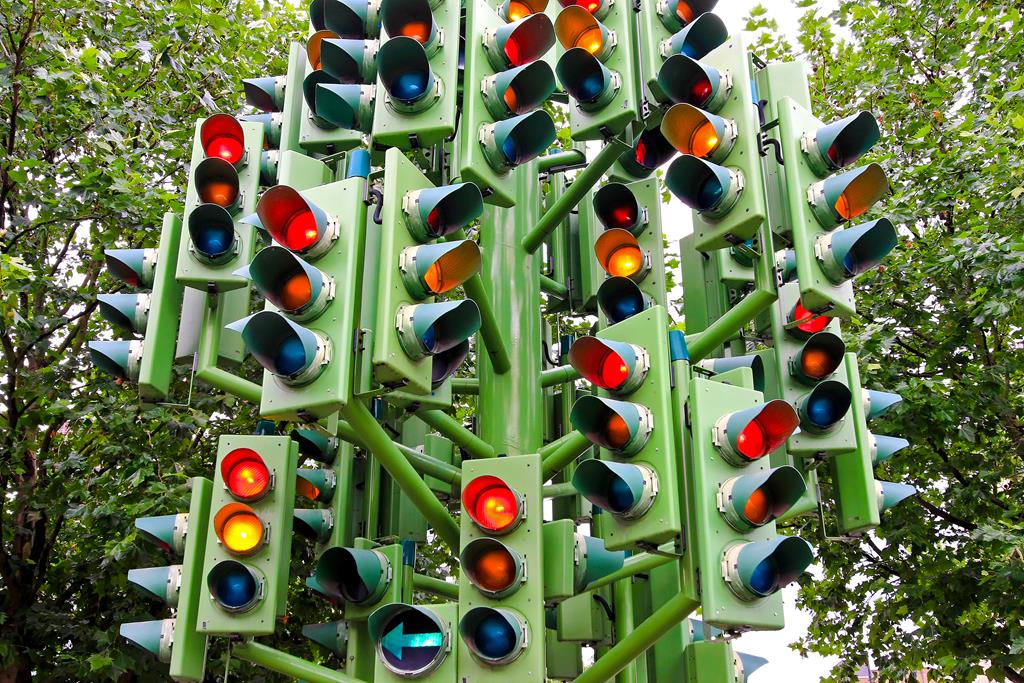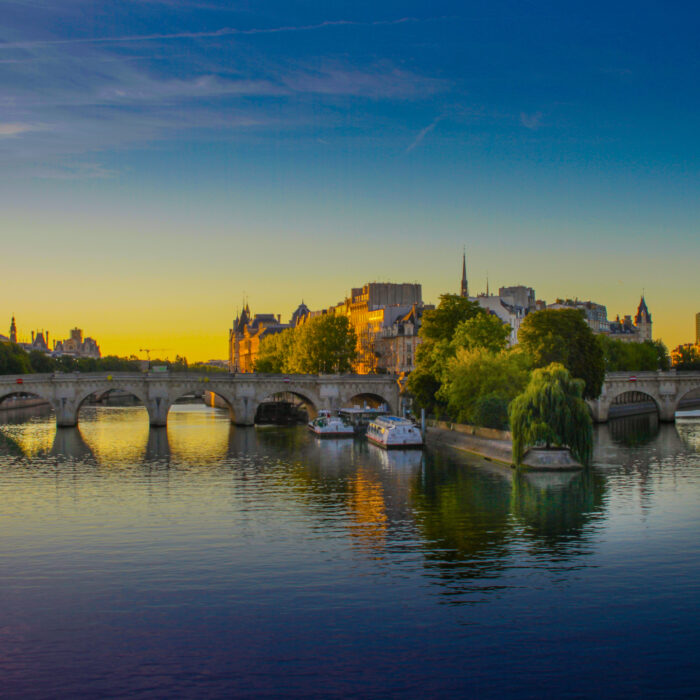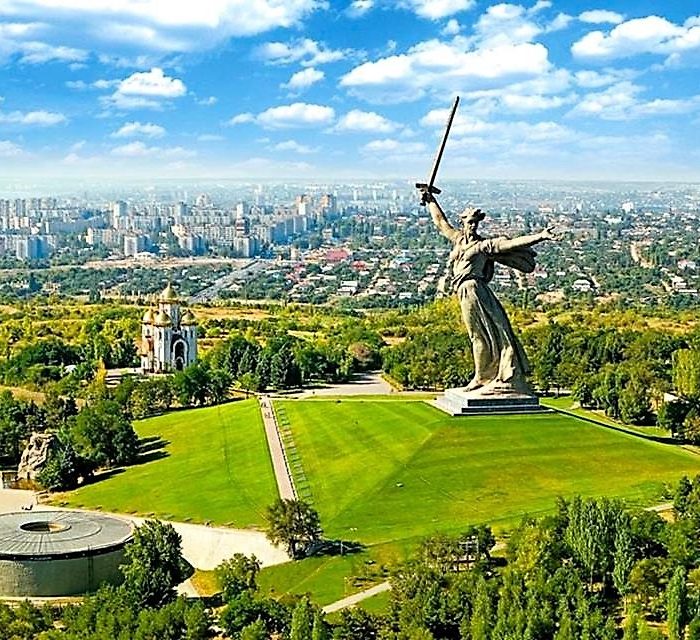Traffic lights in different countries
A traffic light is a device that was invented in the distant 1914. At first traffic lights were installed to regulate car traffic, without assuming that traffic lights for pedestrians, bicyclists, trains, trams and boats, and even reverse traffic lights and separate traffic lights for route buses would later appear.
Modern traffic lights, which can be seen around the world, have undergone some modifications, including:
– An orange color appeared instead of yellow;
– A green static or flashing arrow or the outline of an arrow;
– Noise indicators for pedestrians, allowing or stopping them;
– The brightness and frequency of the glow are enhanced by LEDs now;
– Arrangement of the traffic light could be vertical or horizontal;
– Multiprogrammed modes of traffic lights were introduced recently, the intensity of which depends on the time of day and the situation on the roads.

It is necessary to improve traffic lights because residents of large cities spend about six months of their lives waiting for a green signal.
One of the American cities, populated by immigrants from Ireland, installed traffic lights “upside down”, so the red signal was below the green. If they weren’t upside down, those traffic lights in the city were regularly broken. Irish descendants did not like that the green light, symbolizing Ireland, was located under the red, symbolizing England, and therefore the authorities were forced to change the order of signals.
There is a narrow street named Vinarna Chertovka in Prague that’s about 70 centimeters wide. Therefore, pedestrian traffic is regulated by traffic lights on the road. They have just two signals: green as a permissive, and red for a prohibition. Evil tongues claim that this is just an advertising campaign of the local beer house with a similar name.
During the reconstruction of the Roki tunnel, which connects the Northern Caucasus with Transcaucasia, the traffic flow was carried out along a technical road where there was only one lane. Therefore on both sides of the tunnel, reversed traffic lights were installed, changing their signal to the opposite once per hour. At odd hours the traffic flow moved to the north, and on even hours to the south. This reversed mode lasted about three years.
Until recently in the capital of North Korea there were no traffic lights at all. Road traffic was regulated by the most beautiful girls of the country, and regulators even became a landmark of Pyongyang.
Traffic lights in Dresden have the image of a young lady in a sarafan and with pigtails. While Berlin’s traffic lights have the image of a man in a hat. His name is Ampelmann, and Berliners are proud of him.
Over there in Berlin, there is a traffic light with 13 different signals. Since it is very problematic to understand this baker’s dozen, a policeman on duty helps everyone to understand the signals of this traffic light.
In addition, in Berlin in front of traffic lights, a pedestrian path must be covered with soft rubber. When it is stepped on, it sags, and people involuntarily slow down.
At many modern traffic lights there is a timer with a countdown showing how many seconds are left before the traffic signal changes. This is convenient for both drivers and pedestrians. Sometimes a red prohibitive traffic light signal is accompanied by a rapid tick, and a green permissive signal is ticked by a slow tick. This is convenient for people with disabilities.
In the Norwegian capital, two standing figures, painted in red, are used to prohibit pedestrians from crossing. This helps the visually impaired or people with color blindness understand whether they can go or not.
South Korean designers have developed a traffic light for color-blinded people. At the core of this feature, called Uni-Signal (abbreviation of Universal Sign Light), is the original idea to give different geometric shapes to sections of traffic lights. Also, in the care of those who have color vision disorders, the red color has an orange tint, and the green one has a blue tint.
By the way, in the past in Japan, it was a blue traffic light instead of a green one. But research has shown that human eyes react worse to blue, and all Japanese traffic lights were changed to a green signal. It is interesting that the Japanese themselves continue to call the permissive signal blue.
Pretty often traffic lights take local specifics into account. There is a complex criminal situation in Brazil. A car stopped by a red traffic signal might be robbed in the dark. Therefore from 10 p.m. to 5 a.m. drivers are officially allowed to not stop at a red traffic light signal in Rio de Janeiro. It is society’s concern for the safety of its citizens.
As a rule, traffic lights have three sections, but there are traffic lights with only two sections, red and green. Such traffic lights are usually installed at points where vehicles are checked individually; for example, at border crossings, when entering or leaving parking lot, or protected areas.
In Nordic countries traffic lights are used with three sections that coincide in position and purpose with standard traffic lights, but they a white color and the forms of the signs are as follows: “S” for the prohibiting signal, “—” for the warning signal, and direction arrow for a permissive signal.
In the US a red traffic signal for pedestrians is often shown in the form of a raised palm (the gesture meaning “stop”). Sometimes they use the words “DO NOT WALK” and “WALK”.
There is a pretty popular option to have a traffic light switch after pressing a special button and allowing walking for a certain time afterwards.
To regulate the traffic of bicycles in Vienna, special traffic lights sometimes apply. This can be a traffic light with signals in the form of a bicycle. They have a smaller size and are installed at a convenient height for bicyclists.
Earlier the arrangement of signals at traffic lights was not regulated. And the red traffic light signal in some countries was located in the lower part of the hull. Only in 1949 in Geneva, the Convention on Road Traffic and the Protocol on Road Signs and Signals were adopted. They unified the national norms in the field of traffic and fixed a modern type of traffic light with the arrangement of the red signal on top.

So today traffic lights, being a universal device for traffic regulation, still has a national specificity, its own at each end of the planet.
Thank you for reading, and take an international driving license with you when driving across the globe. Our IDL will help you to understand even more strange traffic lights without issues with local police and car rentals.






